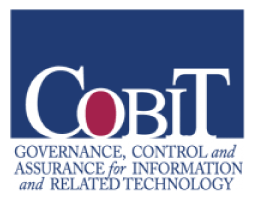Talking with numerous educators over the years, I have heard many colleagues express significant concern regarding how anxiety- and fear-provoking the initial special education evaluation and IEP development process can be for parents and caregivers, especially when the area of autism is being considered. Instead of focusing on the hope that comes with the collaboration between home and school and improving specific communicative skills, educators often feel like they are walking on eggshells around parents and caregivers when it comes to the initial evaluation process and IEP development for autism.
According to RethinkEd, even though students with autism make up only 9% of all students with disabilities, they account for 25% of all due process hearings in special education. With this statistic in mind, it is no wonder that educators run into parents and caregivers who are experiencing a variety of negative emotions when they first hear the word autism. In some cases, the emotions are so intense that I’ve even heard educators question, “Should I even bring up the ‘A-word’ to the parents?”
What is amazing is the stark contrast in how educators view these same students being evaluated for autism. Educators see:
- Strengths that the students possess and how the IEP team can build upon these strengths
- Unlocked potential that they cannot wait to tap in to
- And, most of all, hope for a promising future
So as educational leaders, how can we flip the script and take parents’ and caregivers’ focus away from fear and anxiety and guide them towards strengths, untapped potential, and hope for a promising future? Simply put, the answer lies within how we assess our students with autism and how we interact with their families throughout the evaluation and IEP process.
Avoid Subjectivity
When parents and caregivers are first learning about autism or even hear an educator refer to autism, they may see their child in a much different light than other members of the IEP team. The key in the evaluation process for educators is to take the subjectivity out of the eligibility determination and take the focus off the differences in perception between home and school. If the differences between home and school become the focus, the natural result more often than not is an adversarial relationship. In other words, if the parents emotions are already running high and they are not 100% trusting the educators evaluating their child, then any differences in perception of their child will only exacerbate the relationship between home and school.
Instead of falling into this trap of perceptions, educators should focus on providing objective data that compares the student with autism to his or her same age peers. Rating scales and models such as Social Communication Emotional Regulation Transactional Supports (SCERTS) yield objective data that compare students’ communicative skills to those of other students their age. This takes the subjectivity out of the conversation and supplies parents and guardians with a better understanding of what communicative strengths their child has and what areas call for specially-designed instruction. This shift naturally takes IEP teams away from the “us versus them” mentality and places the focus on skill development and goal attainment.
Communication is Key
Not only should educators focus on objective rating scales and data to compare students to their peers, but educators should also open the lines of communication with parents at the beginning of the evaluation process and continue that communication all the way through the initial IEP meeting. It often helps to know the “why” behind parents’ and caregivers’ reservations and concerns. Sometimes a listening and available ear can go a long way in reducing these concerns. On a regular basis, it also strengthens the relationship between home and school.
Strategies to help improve communication between home and school while navigating the initial evaluation for autism could include:
- Asking parents and caregivers if you could either stop by their home or meet them for coffee at a local cafe – this shows that their concerns matter to you and that you are willing to meet them in a location that they are comfortable with to hear about them.
- Offering to connect the parents and caregivers to other parents and caregivers who have gone through the initial evaluation process for autism (make sure you obtain consent of the other family before offering this up) – this shows that you are acknowledging the challenges and the variety of emotions that they are experiencing, and that they are not alone in this journey.
- Giving parents and caregivers an opportunity to talk with both general and special education teachers about their expectations for a student who receives special education services in the area of autism – this shows parents and caregivers that educators focus more on a student’s disability area needs and goals and NOT on labels.
- Remind parents and caregivers that the emotions that they are experiencing are common and that it may be beneficial to bring in either a family friend and/or parent advocate to help them separate the emotions from the issues – this shows that you are willing to work with them no matter who is at the table.
- Encourage the parents and caregivers to meet with the IEP team after three or four weeks of services being delivered – this shows parents that you value their feedback and are open to making adjustments to programming based on this feedback.
What is a common theme throughout all of the aforementioned recommendations is that parents and caregivers see you and the IEP team members as having a vested interest in the relationship and wanting to work with them for the benefit of their child. In the end, parents and caregivers want to know that their child is receiving the assistance that they need and are being supported by educators who truly care for them. Hopefully these recommendations and talking points help your IEP teams reduce fear and anxiety and create a strong foundation for your relationship with them for years to come.
RethinkEd’s Skills Success platform supports educators in developing and delivering quality IEPs, addressing many of the instructional challenges currently present in special education including. Find out more about RethinkEd’s Professional Development for Diversity & Inclusion.











